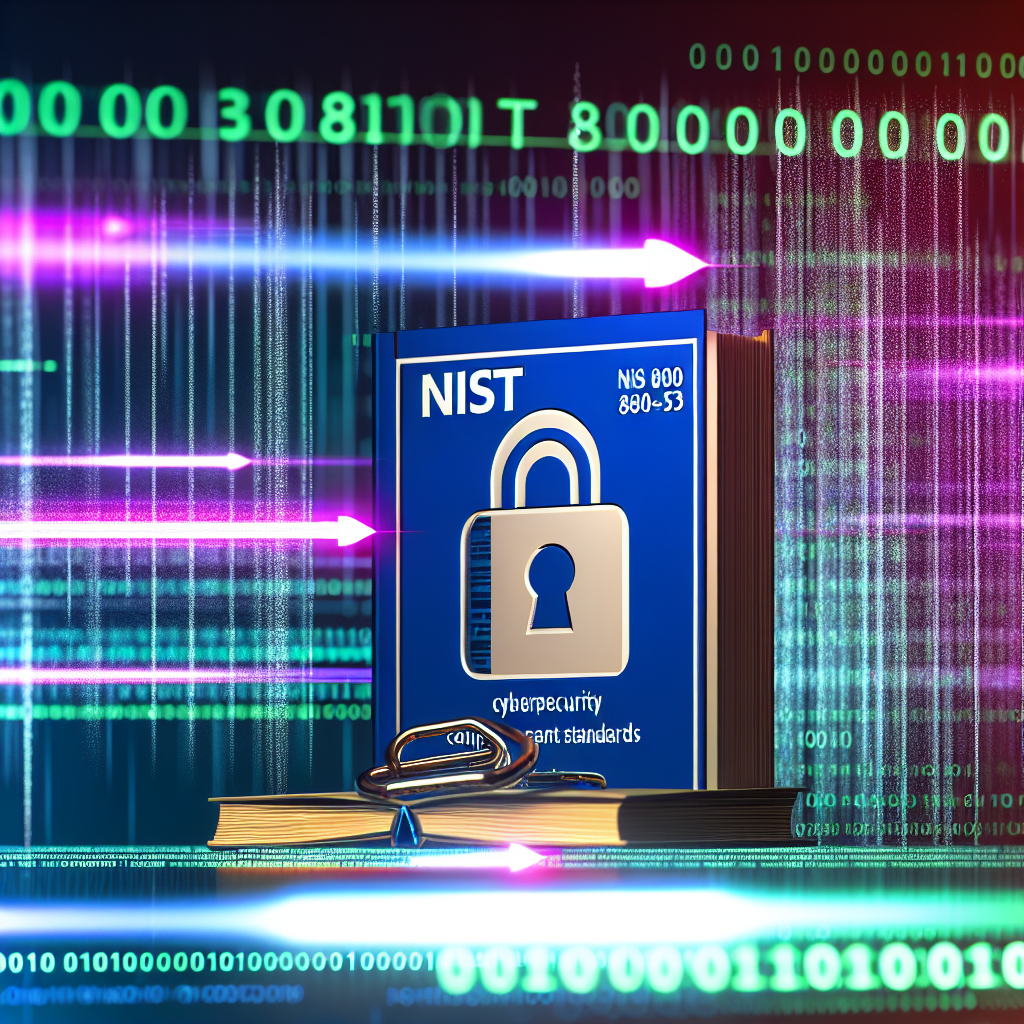NIST 800-53: A Comprehensive Guide to Compliance and Automation
Estimated reading time: 9 minutes
Key Takeaways
- NIST 800-53 is essential for establishing robust cybersecurity frameworks.
- Revision 5 introduces significant updates to address modern threats.
- Automation can streamline compliance efforts and enhance efficiency.
- Control mapping links NIST 800-53 controls to other frameworks.
- Best practices include strategy development, staff empowerment, and regular reviews.
Table of Contents
Introduction to NIST 800-53
NIST, the National Institute of Standards and Technology, stands as a cornerstone in developing cybersecurity standards that shape how organizations protect their information systems. As a U.S. federal agency, NIST’s mission extends beyond creating guidelines—it actively works to strengthen information security across both public and private sectors through comprehensive frameworks and standards like NIST 800-53.
NIST’s cybersecurity initiatives encompass various aspects of risk management, including:
- Identity and access management protocols
- Incident response frameworks
- Protective technology guidelines
- Security control catalogs
NIST SP 800-53 serves as a comprehensive catalog of security and privacy controls designed to protect federal information systems. While mandatory for federal agencies and contractors, its adoption extends far beyond government entities, with private organizations increasingly implementing these controls as cybersecurity best practices.
The framework plays a crucial role in:
- Meeting FISMA requirements
- Establishing consistent security measures
- Enabling effective risk management
- Supporting audit preparedness
Understanding NIST 800-53 Rev 5
Revision 5 of NIST 800-53 represents a significant evolution in the framework’s approach to security and privacy controls. This latest version introduces several key updates that reflect the changing landscape of cybersecurity threats and technologies.
Key Updates in Rev 5:
- Integration of privacy controls into security controls
- Expanded applicability beyond federal systems
- Enhanced supply chain risk management
- Modernized control structure
- Updated definitions aligned with current IT practices
Explore the NIST 800-53 Rev 5 Guide.
The enhanced security controls in Rev 5 demonstrate a more comprehensive approach to modern cybersecurity challenges. The revision addresses:
- Emerging technologies (cloud, IoT, mobile)
- Supply chain vulnerabilities
- Insider threats
- Advanced persistent threats (APTs)
Complete Guide to the NIST Cybersecurity Framework
NIST 800-53 Rev 5 Control Mapping
Control mapping serves as a crucial element in implementing NIST 800-53 effectively. This process involves linking specific controls to corresponding requirements in other frameworks, such as ISO 27001 or PCI DSS.
Steps for Effective Control Mapping:
- Identify regulatory requirements
- Analyze control requirements
- Document control equivalencies
- Address identified gaps
- Maintain regular reviews
Common challenges in control mapping include:
- Inconsistent definitions across frameworks
- Varying levels of abstraction
- Evolving requirements
- Resource constraints
NIST SP 800-53 Compliance Explained
NIST 800-53 Compliance Automation
Automation plays an increasingly vital role in maintaining NIST 800-53 compliance. Organizations can leverage various tools and technologies to streamline compliance processes and reduce manual oversight.
Benefits of compliance automation include:
- Real-time compliance monitoring
- Reduced manual effort
- Improved accuracy
- Faster gap identification
- Streamlined audit preparation
Discover NIST 800-53 Compliance Automation
Cloud Migration Guide
Tools and technologies supporting automation:
- GRC platforms
- Compliance scanners
- SIEM systems
- Automated assessment tools
- Configuration management databases
Benefits of Automating NIST 800-53 Compliance
The implementation of automation in NIST 800-53 compliance offers numerous advantages:
Increased Efficiency:
- Automated real-time verification
- Reduced oversight requirements
- Faster compliance reporting
- Improved resource allocation
Error Reduction:
- Minimized human error
- Consistent control application
- Standardized documentation
- Automated verification processes
Continuous Compliance:
- Real-time monitoring
- Rapid adaptation to changes
- Automated updates
- Proactive compliance management
Challenges and Considerations
While automation offers significant benefits, organizations must address several challenges:
Technical Challenges:
- Integration complexity
- Legacy system compatibility
- Data security concerns
- Scalability requirements
Operational Considerations:
- Staff training needs
- Process adaptation
- Change management
- Resource allocation
Best Practices for Implementation
To ensure successful NIST 800-53 implementation, organizations should follow these best practices:
Strategy Development:
- Define clear objectives
- Establish implementation timelines
- Create resource allocation plans
- Develop measurement metrics
Staff Empowerment:
- Provide comprehensive training
- Establish clear roles and responsibilities
- Create feedback mechanisms
- Support continuous learning
Regular Review Process:
- Schedule periodic assessments
- Update control implementations
- Monitor effectiveness
- Adjust strategies as needed
Conclusion
NIST 800-53 continues to serve as a fundamental framework for organizational security. By understanding its requirements, leveraging automation, and following best practices, organizations can establish robust security measures while streamlining compliance efforts.
The key to success lies in:
- Understanding framework requirements
- Implementing appropriate controls
- Leveraging automation effectively
- Maintaining continuous improvement
Complete Guide to the NIST Cybersecurity Framework
FedRAMP Compliance Guide
Additional Resources
For further information and guidance:
- Official NIST Documentation: NIST Website
This comprehensive approach to NIST 800-53 compliance, combined with effective automation strategies, positions organizations to better protect their information systems while maintaining efficient operations.

